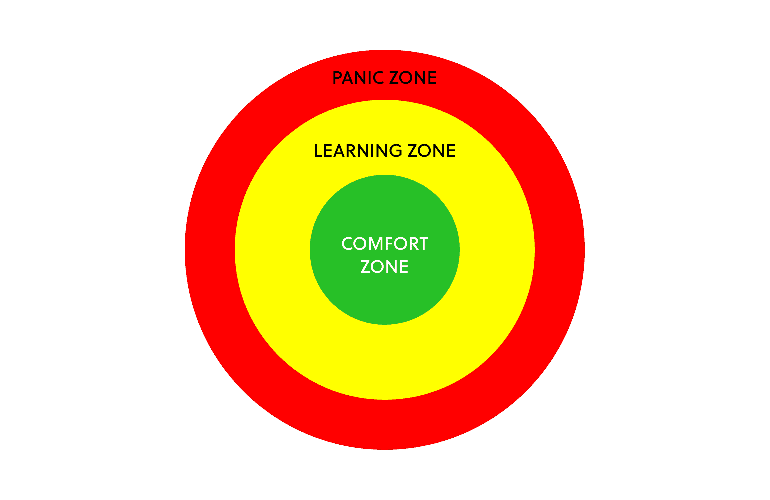
The world is changing every day. Are you equipped to adapt? Here's how to find direction, expand your options, and adjust your outlook in volatile times.
This post originally appeared on the Evernote Blog
Uncertainty is the new normal
Have you felt on edge lately? Like the world is spinning out of control, and each passing year is less stable than the one before?
In this fast-paced, tech-driven life, many of us feel overwhelmed even at the best of times. But add a global pandemic, massive economic disruption, social unrest, and the looming threat of climate change, and it’s enough to make anyone lose sleep.
Even without another disaster, it’s easy to see that change is speeding up. As far back as 1987, the U.S. Army War College defined a state called VUCA—short for Volatility, Uncertainty, Complexity, and Ambiguity—as an emerging new normal. We see VUCA in action every day, from the disruptive pace of new technology and automation to massive changes in how and where we work. Life, it seems, really is a state of constant flux.
So if you’re feeling anxious and lost, that’s normal. It’s not a failure on your part. And the good news is that it’s fixable.
You can’t always know or control what tomorrow will bring, but you can control how you react to change. Will you flounder and drown, or will you find stable ground and take advantage of fresh opportunities? Your adaptability, along with the overlapping traits of resilience and emotional intelligence, may well tip the balance.
What does adaptability mean, really?
Being adaptable doesn’t mean “going with the flow” and letting the currents carry you along. A better definition comes from Andrew J. Martin of the University of New South Wales, who identified three components of adaptability:
- Adjusting your thoughts and thinking in response to change
- Managing positive and negative emotional responses to change
- Altering your behavior in response to change
True adaptability begins with rational thought and ends with deliberate action. It’s a growth mindset—an understanding of how to adapt to change that anyone can cultivate through self-reflection, creative thinking, and intentional practice.
Be ready for anything: Your adaptability toolkit
As executive coach Jennifer Jones noted in a 2017 TED Talk, “we’re losing the ability to adapt because we’re not taking the time and attention to prepare and develop ourselves. We’re jumping from change to change, acting on impulse, not acting on strategy.”
Here are three sets of specific tools you can use right now to build that strategy, become more adaptable, and navigate even the scariest change:
1. Follow the North Star
We’ve written before about why goals matter, and how achieving those goals requires specific, realistic plans. But in a world of constant change, your goals and plans can become obsolete overnight. What happens then?
To answer that question, imagine someone has dropped you in an unfamiliar part of the world, deep in the woods. How would you find your way home? First, you’d need to know which way is north.
To become more adaptable, you need goals big enough to provide a True North in your life. You also need enough self-understanding to draw a map and figure out where you stand in relation to those goals.
Take action:
- Find your North: Ask yourself these questions: What is my personal or professional purpose? What makes me feel fulfilled as a human being? Which parts of me are so fundamental that external change can’t ruin them? Write your answers down.
- Identify landmarks: What talents, skills, or experience do you have right now that few others possess? A mastery of JavaScript? A flair for baking? An encyclopedic knowledge of Marvel Comics? Take inventory, put it all in writing, and don’t be shy.
- Draw a map: Creating a Life Map helps you connect the dots between your North Star goals and where you are today. Grab some paper and markers and you can have it done in an hour.
- Break down your plans: Once you have the big picture, future-proof your plans by breaking them down into short, medium, and long-term scales. Make detailed plans for the next week or two, define general milestones for the next few months, and limit the long term to one or two core principles.
Keep all these notes together in Evernote. Come back to them whenever you’re feeling anxious or adrift. They’ll reconnect you to the things that matter most, so you can blaze a new path forward.
2. Expand your comfort zone
Adapting to change is hard if you’re stuck in a habitual pattern. We stay in our “comfort zone” because it’s safe and predictable—but it also holds us back. We’re comfortable with what we know. Learning and growth require more.
Outside the comfort zone, things can get scary. When our situation changes too much or too fast, the comfort zone can vanish along with it, leaving us in a “red zone” of anxiety and panic. That’s when our “fight or flight” instincts take over. Switching to reflex is a good survival skill when facing a rampaging tiger, but not so helpful when we have to adapt our lives and businesses to social distancing or changing market forces.

Thankfully, you don’t have to choose between comfort and panic. There’s a third zone in between—the learning zone—where we become more adaptable. We step into this zone when we engage with new ideas, practice creativity, or pick up new skills. The more time you spend in the learning zone, the more alternative possibilities you discover. Eventually, your comfort zone expands and your panic zone shrinks.
Take action:
- Set your curiosity free: Open yourself up to new ideas and influences. Read books in categories you wouldn’t normally pick up and note your reactions. Expand your social media bubble to include experts within (and beyond!) your field. Break your daily routine and try new experiences.
- Learn new skills: Expand your horizons by picking up skills that complement the ones you already have. If you love digital photography, shooting with black-and-white film can teach you to slow down and see a subject with fresh eyes. If you’re good at coding, taking a design class can give you a deeper understanding of how others interact with your work.
- Flex your creative muscles: You may not think of yourself as a creative being, but you truly are. Writing, art, improvisation, and music are powerful ways to improve mental flexibility. And there’s growing evidence that it can literally rewire your brain. How cool is that?
- Keep inspiration handy: You come across interesting ideas, articles, and images every day; things that may not apply to your life now but might be useful later. Don’t let them slip away! A commonplace book or spark file in Evernote can become a bottomless source of inspiration. Browse through it whenever you’re stuck for a fresh solution—the answer may already be in your notes!
3. Learn from your mistakes (and your successes)
So far, you’ve been laying the groundwork for a more adaptable version of yourself. You have a map to orient you. You’ve expanded your comfort zone, so the unknown feels less threatening. The next step is to build adaptation into your routine. Remember, adaptation isn’t just about going with the flow; it’s a mindset bolstered by consistent practice.
That means you have to become more self-aware, and be willing to give yourself honest, constructive critique. Get into the habit of recording your progress. Direct your focus into the things that are working, discard the rest, and look for new alternatives.
Take action:
- Record your life: Keeping a journal is a terrific way to track and understand your emotional state. A journal can help you identify stress triggers, assess your responses, and work through problems or fears. All of that matters when you have to respond to a challenging situation.
- Catalog your failures: This might sound like a ticket to low self-esteem, but a failure log is actually a powerful tool for growth. Look for the specific reasons things didn’t work out. Did you need more training? A better plan? More support from your colleagues? How can you better prepare for the next attempt? The takeaway is not that you screwed up, but that you can improve.
- Give yourself some love: Looking at your failures can take a heavy emotional toll, so make sure you’re balancing the negative with the positive. Track your small wins and all the things you do to help yourself grow: your reading, classes, workouts, and creative outlets. Consider starting a gratitude journal or a “done list” to remind yourself of everything that’s going right. There’s probably more than you realize.
Remix, revamp, repeat
Our final tip is the simplest: Schedule time each week to review how things are going. Keep this appointment with yourself sacred, because this is where everything comes together.
Looking over your journal, ask yourself: What’s working, and what isn’t? What new ideas have you added to your inspiration notebook that might bring you more in line with the goals in your Life Map? What project or skill should you pursue next?
Sometimes adapting is easy. If the pandemic ruined your plan to hit the gym three days a week, you can always work out at home. Other challenges are far more difficult, but still solvable. If you’ve lost your job, for example, you can regroup. Use your inventory, Life Map, and creative skills to brainstorm new opportunities—offering your skills as a freelancer, partnering with others in mutual support, or changing career paths.
As you consider your options, look for unexpected connections. Practice divergent and convergent thinking to brainstorm as many ideas as possible and select the best ones. Above all, focus on solutions, not problems. Adjust your outlook, change your behavior, and see what happens.